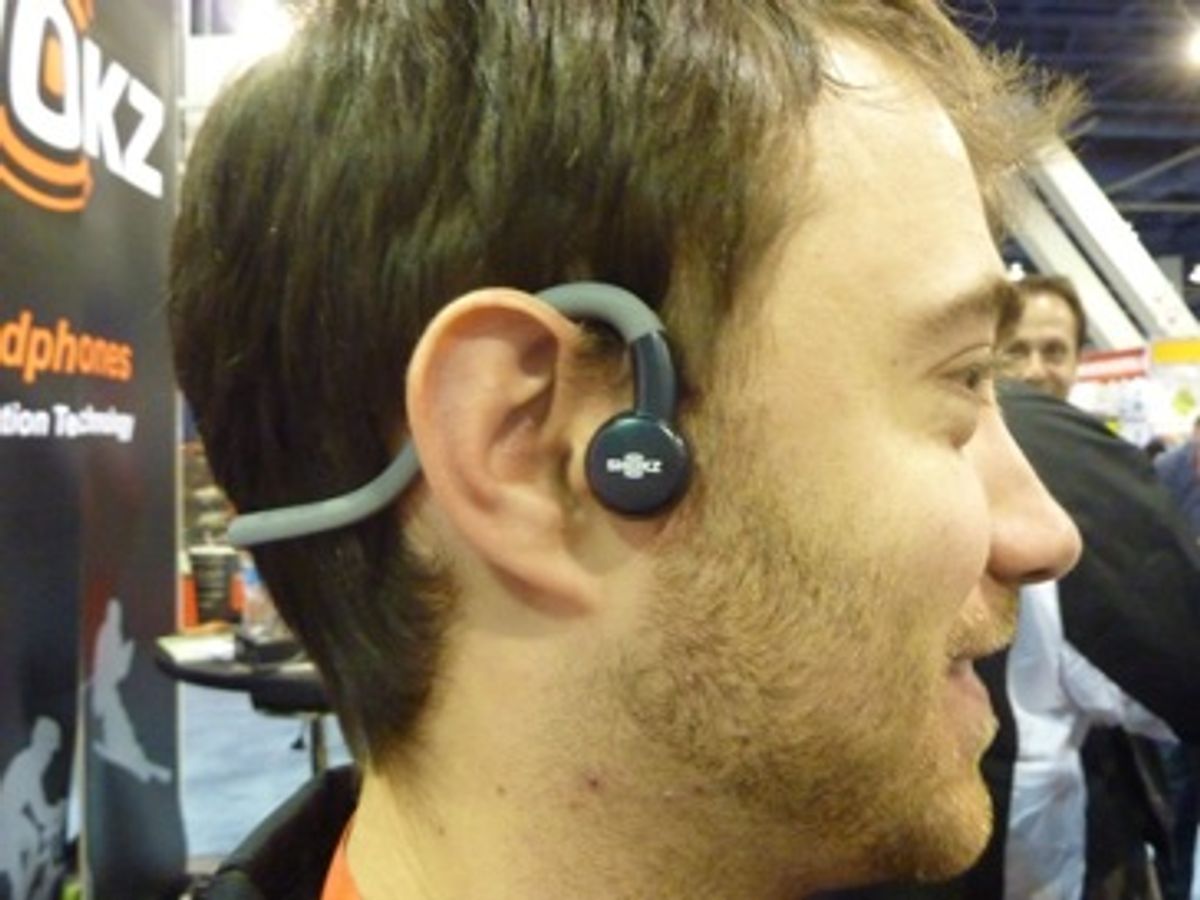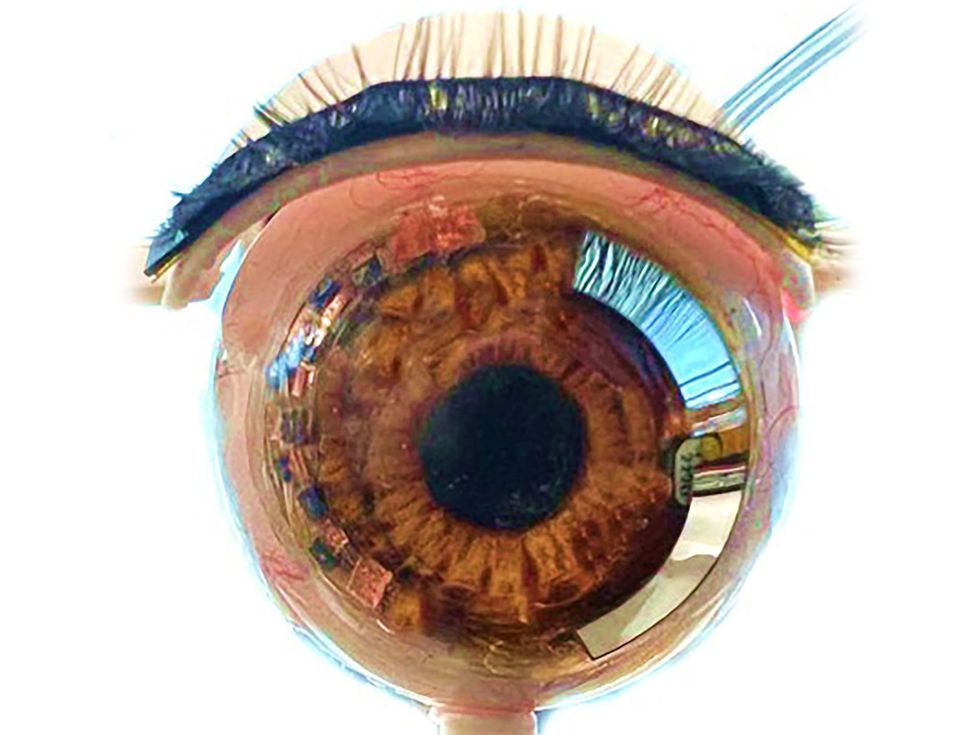So while a lot of new technologies introduced at CES seemed interesting and potentially useful, two thrilled me, because they potentially can eliminate these hated headphones from my life.
The first I’ll be able to use, because it’s already a product, introduced last week, are AfterShokz’s headphones. These are decidedly headphones, not earbuds or earphones, because they don’t go in the ear. Instead, they rest quite comfortably on the cheekbones, and use a magnetic transducer to send vibrations to the bones in the ears, creating sound.
The sport version (headphones only) is $60, the mobile and game version, which adds a microphone, is $70. Testing them briefly on the CES floor it was hard to get a handle on their quality, given the test unit was blasting hip hop music and the show floor was painfully noisy, but, even so, the sensation of having my ears unencumbered while listening to music was seductive, and I’m looking forward to trying them with my music in my environment (and getting them on my son). Company reps say that they certainly aren’t going to compete with $500 headphones designed for audiophiles, but for sport use the quality is fine.
Couple of fun facts I picked up at the CES booth: putting the AfterShokz headphones on a shoebox creates an instant boom box for shared listening, and an earlier prototype failed to work with certain brands of gym equipment (many treadmills and cross trainers today have built in headphone jacks); company engineers tweaked the device’s impedance to solve this problem, and that tweak surprisingly improved the overall sound quality.
AfterShokz could allow me to toss my everyday earblocking headphones and earbuds, but they aren’t going to help me on an airplane, where the main reason I’m wearing headphones is to get rid of that horrid hum.
Turns out CES had a technology to solve this problem as well. Silentium, a company from Israel, demonstrated its Quiet Bubble Technology—noise cancellation designed to be built into an airline seat. The secret is in the company’s algorithms, which company representatives say are unique in that they don’t require the microphone detecting the noise to be essentially at the same point at which the noise is going into the ear. The company said the technology has been embraced by at least one manufacturer of airplane seats, but the seats haven’t been installed in any airplanes yet. Future applications include car seats and bed headboards (to block out snoring).
Tekla S. Perry is a senior editor at IEEE Spectrum. Based in Palo Alto, Calif., she's been covering the people, companies, and technology that make Silicon Valley a special place for more than 40 years. An IEEE member, she holds a bachelor's degree in journalism from Michigan State University.




